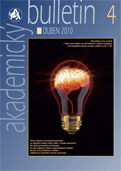Academy of Sciences of the Czech republic › About AS CR › AS CR Structure › Research institutes › neziva
Astronomical Institute of the ASCR, v. v. i.
Astronomical Institute of the ASCR, v. v. i.
Fričova 298
251 65 Ondřejov
251 65 Ondřejov
Phone: +420 323 649 201; 323 649 212
FAX: +420 323 649 314
E-mail: asu@asu.cas.cz
Chart: asu_chart.pdf
The Astronomical Institute (ASI) was established as of 1 January 1954 from the former Astrophysical Observatory and the Laboratory for Time Measuring, which were created in 1953 from the Central Astronomical Institute after its incorporation into the Czechoslovak Academy of Sciences. The Institute is thus the successor to the observatory founded in 1722 in the Prague Clementinum (later the State Observatory) and the Ondřejov Observatory founded in 1898 by J.J. Frič. Pursuant to Act No. 341/2005 Coll., the Institute became a public research institution as of 1 January 2007.
The principal activity of the ASI is scientific research and development in the fields of astronomy and astrophysics covering in particular the origin, evolution, dynamics and physical properties of stars, stellar systems and relativistic objects, exploration of the Sun, solar activity and its impact on terrestrial processes and, in interplanetary space, exploration of the Earth’s near-space environment, the dynamics of natural and artificial bodies of the solar system, and study of the interplanetary matter and its interaction with the Earth’s atmosphere.
The principal activity of the ASI is scientific research and development in the fields of astronomy and astrophysics covering in particular the origin, evolution, dynamics and physical properties of stars, stellar systems and relativistic objects, exploration of the Sun, solar activity and its impact on terrestrial processes and, in interplanetary space, exploration of the Earth’s near-space environment, the dynamics of natural and artificial bodies of the solar system, and study of the interplanetary matter and its interaction with the Earth’s atmosphere.






Her parents are employed in the IMG (project BIOCEV). Because Katareeya originates from a “third country”, namely, Australia, according to the Czech legislation she is not entitled to healthcare support from the public healthcare insurance.
The cost of intensive therapy during first two months have already exceeded the limits of private insurance in the amount of 1,6 million CZK. All the cost now repose only on the girl’s parents.
More information...